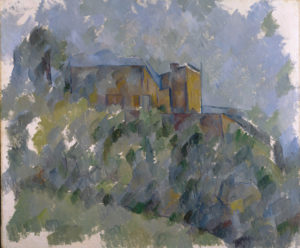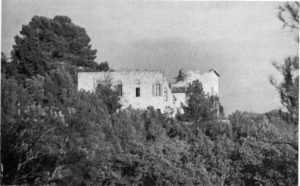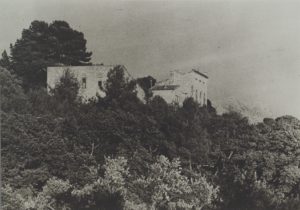R919 – Château Noir, vers 1904 (FWN358)
Pavel Machotka
(Cliquer sur les images pour les agrandir)
The view of the Château Noir that Cézanne painted in about 1904 took as its vantage point a spot to the right where no trees framed the building; this simplified the composition and set the house into the close embrace of the Sainte-Victoire and Mont du Cengle, the plateau at its foot. Here it is not intrusive lines but rhythmic patches that give the canvas its character, and they are harmonious—unsaturated, low in contrast—because they represent trees and bushes in shadow, with the sun still behind them and just rising. There are two systems of patches here: the rhythmic ones, which are bounded diagonally so that the one on the right is always in front of the one on the left, and flat ones, laid end to end, which define the building and the sky. But the contrast between them is minimal, because Cézanne, responding to the appearance of the site, takes care to hold the entire composition in a shallow plane: only the three walls of the buildings that face south reflect the morning sun and the rest remains in shadow. Perhaps there is also a slight haze, but this is only conjectural; the site in any case appears flatter than it will in the late afternoon and the colors are less distinct. None of this prevents Cézanne from painting a masterly canvas that integrates the house perfectly into its setting, gently opposes grey-violets to light olives and grey-blues to dull oranges, and places every local color in some small measure into all surfaces of the painting.
Source: Machotka, Cézanne: The eye and the Mind.
Photographie du site :





Vous devez être connecté pour poster un commentaire.